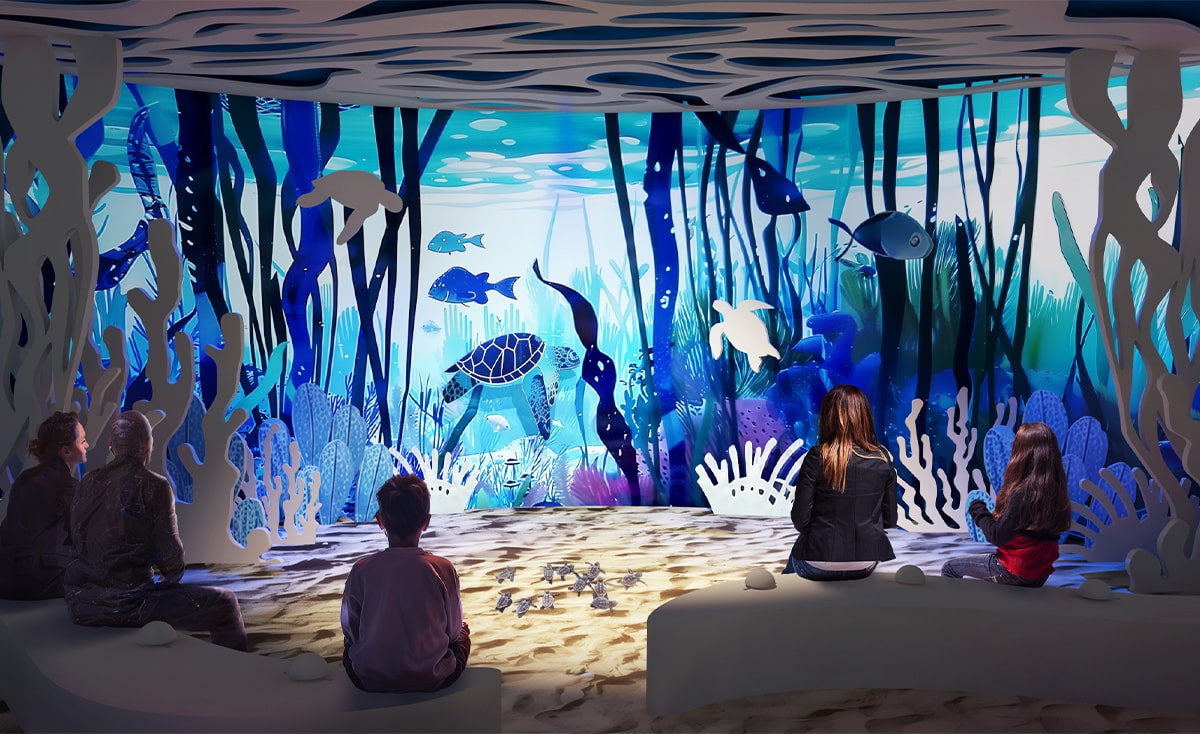
Earth Day isn’t enough. Discover how immersive experiences can drive real environmental change through empathy, action, and connection.
Awareness Fatigue: Why Just Knowing Isn’t Working Anymore
On 22 April 2025 we saw another Earth Day come and go. We saw the hashtags, poster-worthy quotes, recycled graphics, and urgent call-to-actions. It’s well-meaning, of course. But let’s be real: awareness alone does not work.
We’ve been aware of climate change for decades. Aware of habitat destruction, pollution, melting ice caps, burning forests, dying oceans, vanishing bees. So aware we could write dissertations on it in our sleep. And yet, here we are.
We’re Not Numb – We’re Disconnected
The problem isn’t that people don’t care. In fact, many of us will get infuriated at the news of nature coming off second best to urban development. But we are still so removed from these environmental issues. For many of us, global warming, habitat loss, and species extinction, is still only a sad news article or social media post. This is not alright.
Let’s perhaps look at the truth we need to meet to shift the ‘culture’ of environmental awareness into a culture of environmental action. Humans don’t make big, hard, lasting changes for things they only know about – they change for the things they feel connected to. For the things they’ve touched, seen, heard, or lived through. We protect what we love. And we love what we’ve experienced.
How Immersive Exhibits Bridge the Gap Between People and Planet
So, if Earth Day wants to be more than just another drop in the awareness ocean, we need to change tactics. We need to stop telling people to care and start showing them what’s at stake and what they can individually do- in a way they’ll never forget.
With Earth Day behind us and World Environment Day coming up (05 June 2025), let’s see if we can make this fundamental shift. From ‘awareness to action’, or ‘intention to impact’, whatever you choose…
So where do we start? If we can’t experience the world’s most vulnerable environments and species first-hand, let’s bring these to the people. Many of the world’s visitor centres and science centres do this very well with carefully curated and well-designed interactive and immersive experiences.
The formula D_ Approach: Creating Impact Through Experience
At formula D_, this is our playing field.
Working with the Two Oceans Aquarium Foundation, the Turtle Conservation Centre aims to blend sanctuary, discovery, and transformation – bringing the ocean ambassador out in all of us. The experience that we are helping to design, offers a space that is not only a sanctuary for rescued sea turtles, but also a place of deep learning for visitors. A playground of discovery that sparks joy for all ages to learn about sea turtles and their critically endangered conservation status. The intention of this experience is to act as a catalyst for change, fostering empathy, hope, and action for ocean conservation.
Our goal? To help visitors see themselves as agents of change for ocean wildlife and habitats.
Empowering Kids at Roper Mountain: Hands-On Sustainability Learning
Let’s look at the Sustainable Future exhibits we created for the Roper Mountain Science Center in South Carolina. These interactive, tech-enabled spaces empower children to explore the connections between their actions and the environment, from understanding how water flows in natural systems to seeing the real-time impact of energy choices.
Learning by Doing: Kids Discover Their Environmental Impact
In the Energy exhibit, kids generate power by pedalling a bike, then choose how to spend their “energy budget” across everyday tasks like lighting, cooking, and transportation.
The Water exhibit invites them to redirect rivers, manage flooding, and discover how even small changes in land use affect ecosystems. These experiences are designed not just to educate but to help young visitors see that sustainability isn’t abstract, but rather that it’s very possible with different choices.
Why Emotional Imprints Matter More Than Information Overload
These experiences are designed to ignite wonder. To make visitors – especially kids – stop and say, “Wait, this is incredible. I want to protect this.” That emotional imprint doesn’t fade. The message doesn’t get diluted in social media feeds and in news cycles. It sticks. And that stickiness? That’s what changes behaviour.
It’s not just us that does this well. The California Academy of Sciences’ “Rainforests of the World” exhibit in San Francisco drops visitors into a four-story living rainforest. This visitor centre is alive with butterflies, birds, and reptiles – and it’s all happening under a glass dome. You’re not just looking at nature; you’re walking through it. You’re in a rainforest in San Francisco…
Head across the globe to the Singapore City Biodiversity Gallery, where visitors can step into a digital mangrove forest, interact with native species in real-time through AR, and witness how ecosystems shift and suffer with human impact – all in an eerily beautiful, tech-driven dreamscape.
When first-hand nature-based experiences are not possible, these highly interactive tech-driven experiences are just as powerful.
Raising a Generation of Environmental Stewards
So, leading up to World Environment Day, here’s our message: take your children to experience an immersive nature-based exhibit. If we want people to rethink how they consume, vote, travel, live – if we want to create true environmental stewards – we have to connect them with the beauty and complexity of nature in ways that stick with their nervous system. It needs to be part of their upbringing, built into their DNA.
Go Beyond Awareness—Design for Change
Museums, science centres, and everyday visitor centres have the power to do just that. But only if we push the limits of traditional exhibit design and start creating experiences that blur the lines between the built and the wild.
Let’s go beyond awareness.



